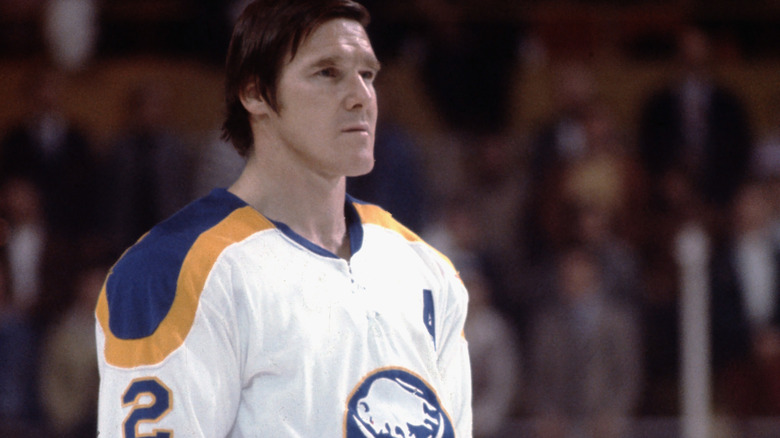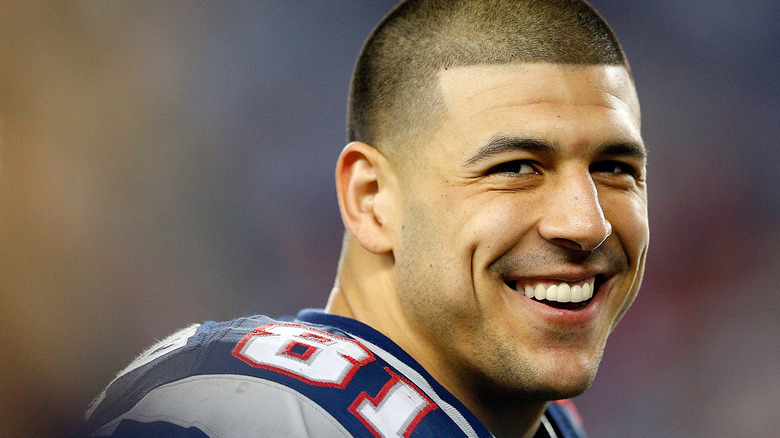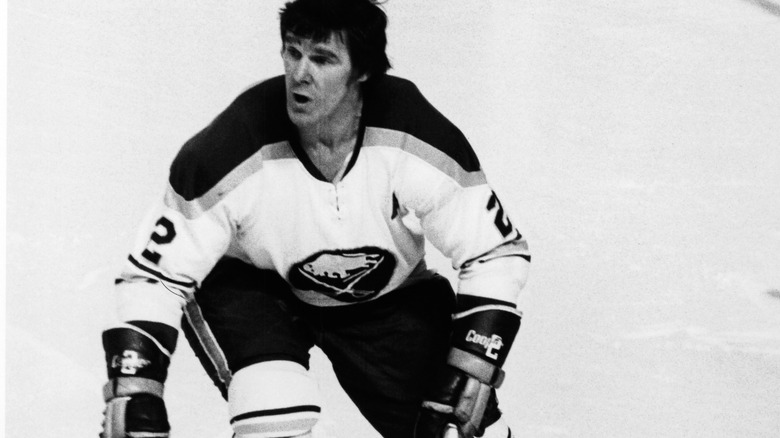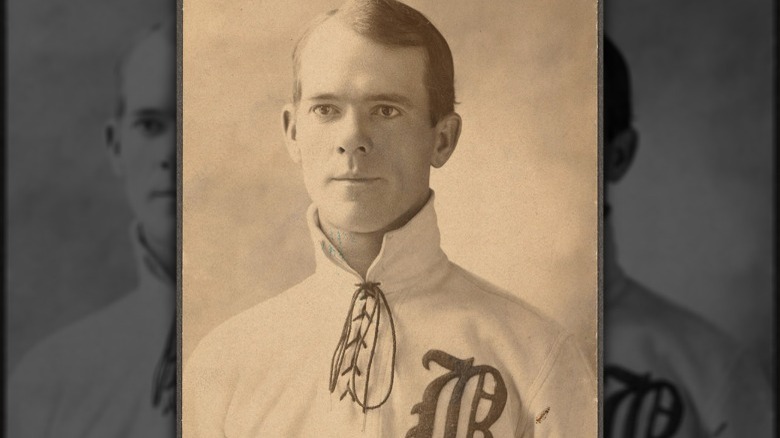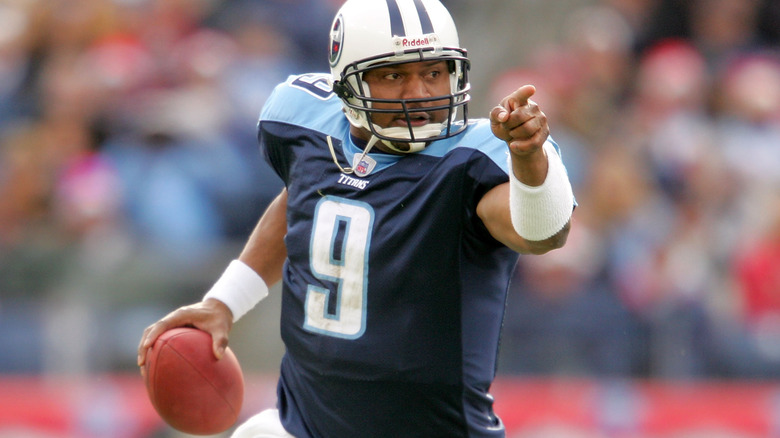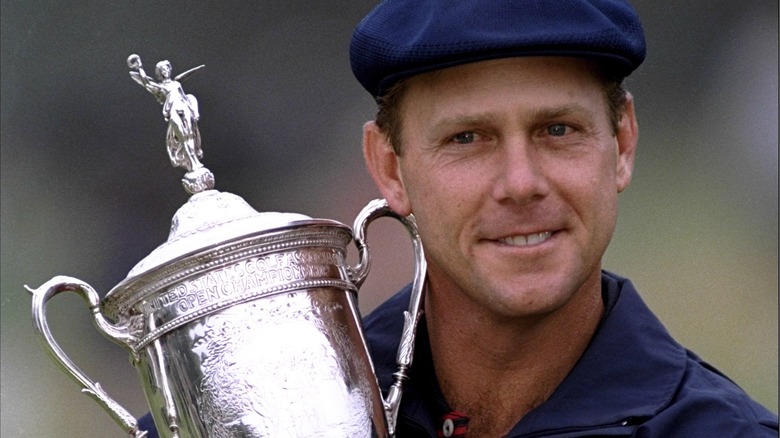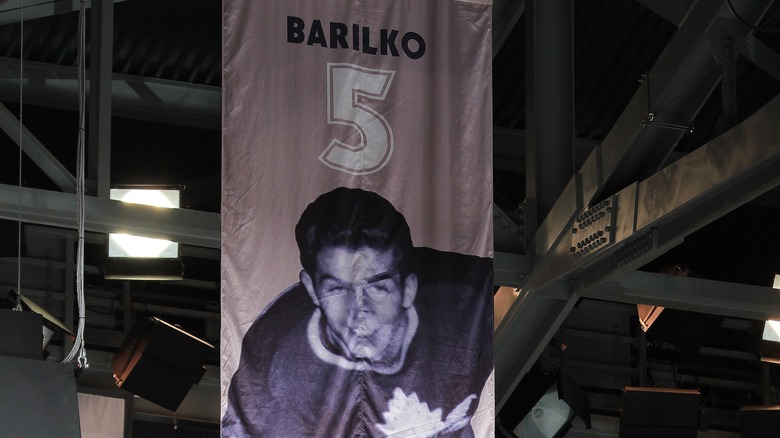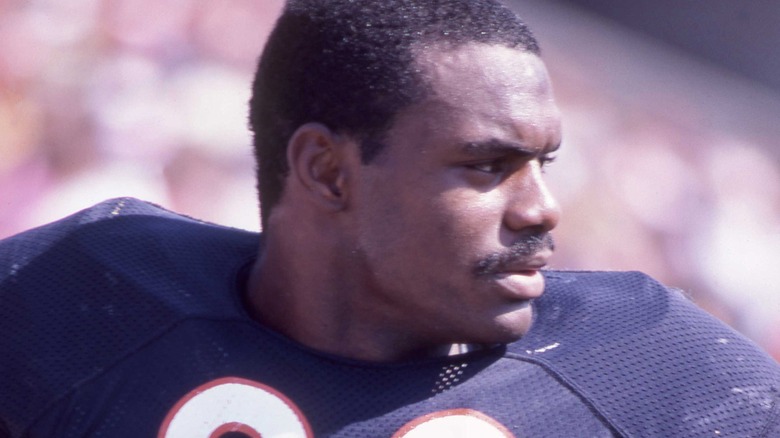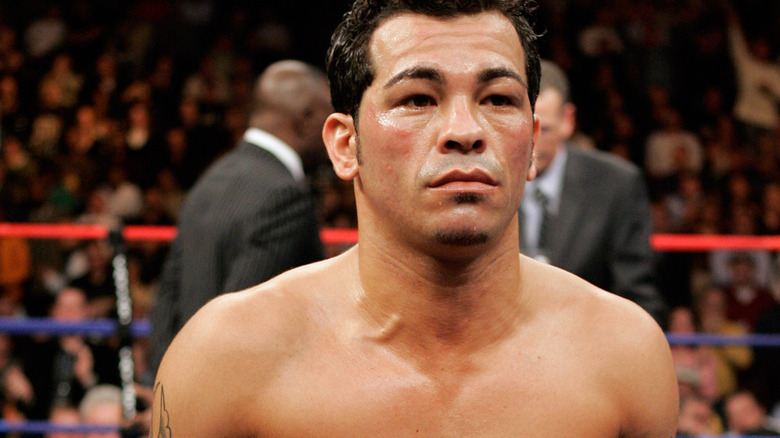Things Found At Athlete Death Scenes
Athletes just live longer than the rest of us couch potatoes, right? It's a logical assumption to make, and studies have actually found that it's ... complicated. One study published in Frontiers in Sports and Active Living wanted to look at the difference in life expectancy between healthy, active, but relatively ordinary people and Olympic athletes. They actually found that there was a point where the kind of training needed to compete at an elite level seemed to actually shorten life spans, which kind of makes sense: Professional and elite athletes are putting their bodies through some grueling stuff.
Researchers added that more work needed to be done, but they weren't alone in their discovery. Another study published in Sports Medicine found that although athletes did have an overall longer and healthier life, there were cases where some things — particularly cardiovascular incidents — spiked.
Still, every person is living on borrowed time, and it's only a matter of years, months, or even days before it's time to shuffle off this mortal coil. But when it happens to some of the most elite athletes, the healthiest and fittest of us all, it can be a little shocking. Have any of them left clues behind as to what happened in their final moments? Absolutely.
The following article mentions people who died by suicide. If you or anyone you know is having suicidal thoughts, please call the National Suicide Prevention Lifeline by dialing 988 or by calling 1-800-273-TALK (8255).
Aaron Hernandez
When New England Patriots star Aaron Hernandez died by suicide in 2017, he was serving a life sentence for murder. Only after his death did an examination of his brain reveal that he had been suffering from an advanced case of chronic traumatic encephalopathy. (CTE is a degenerative condition caused by repeated blows to the head, which can result in extreme behavioral changes, per the Mayo Clinic.)
According to CNN, law enforcement had issued an extensive report on what was found in his cell when his body was discovered. It was found that he had taken several steps to make it difficult for the guards to see what he was doing, and interfere: Initially, a sheet hanging over the window of his cell door blocked the view from the outside. When the guards went to open the door, they found he had jammed the mechanism with cardboard — it was something he'd done before, and been reprimanded for. He'd also dumped shampoo on the floor.
Written on both the wall of his cell and on his forehead — in blood — was "John 3:16," a reference to the Biblical verse, "For God so loved the world that he gave his one and only Son, that whoever believes in him shall not perish but have eternal life." The blood seemed to have come from a cut on his finger, and more blood was on his feet. Hernandez also left three suicide notes: One was for his attorney, one for his daughter, and one was for his fiancée.
Chris Benoit
Anyone who followed wrestling knows who Chris Benoit was, and he was such a high-profile star that even those who didn't follow it knew his name. Over the course of his long career, he racked up championship after championship, was a fan favorite for years, and then, in 2007, he didn't show up to scheduled events. When law enforcement went to his home to check on him, what they found was a grisly crime scene.
The investigation into what happened over the course of a weekend ultimately allowed law enforcement to lay out a grisly timeline, saying (via ABC News) that Nancy Benoit was killed on Friday, and left with a Bible placed next to her. Daniel Benoit, their 7-year-old son, was apparently killed on Saturday. He was left in his bedroom, surrounded by his wrestling figures, toy versions of wrestling memorabilia, and a Bible at his side.
Benoit himself was found on a piece of exercise equipment, another Bible nearby. Although it was initially suspected that the events of the weekend stemmed from the consequences of steroid use, the WWE pointed to the careful placement of the Bibles as an indication that the events were premeditated and planned, saying (via News 24): "The presence of a Bible by each is not an act of rage. The physical findings announced by authorities indicate deliberation, not rage." An autopsy would later reveal that Benoit had been suffering from extensive brain damage linked to a history of concussions, per ABC News.
Tim Horton
At the time of Tim Horton's death, he was 44 years old and still on the ice, having accumulated a wildly impressive 1,446 games. So when he died in 1974, it was a massive shock.
The initial reports (via The New York Times) stated that he had been killed in a car accident on the Queen Elizabeth Way. There was a little more to it than that, though, and it wasn't until 2005 that the Ottawa Citizen petitioned for the release of the investigation reports under the Freedom of Information Act. Horton, it was revealed, had a blood alcohol content more than twice the legal limit, and he was also found to have a prescription medication in his system that was, at the time, a perfectly legal mix of amphetamine and barbiturates.
Along with some pretty typical things most people keep with them when they're on the road — like a suitcase, credit cards, a package of cigars, 8-track tapes, and a wallet — he was also carrying some pills. In addition, a bottle of Smirnoff was also found at the scene, apparently thrown from the car on impact. Interestingly, the question of whether or not Horton had been driving under the influence was one that wasn't answered for a long time: Initially, official reports said there were no signs of alcohol use. It wasn't until decades passed that the truth came out, and along with that, coincidentally, a push to reintroduce photos of Horton back into the restaurants that bear his name.
Marty Bergen
Marty Bergen might not be a household name today, but in the years leading up to the 20th century, he was widely known as one of the best catchers in baseball. He was behind the plate for the Boston Beaneaters, and he was so good that stealing bases just didn't happen when he was on the field. But he also carried demons with him: According to what Harvard Medical School's Dr. Carl Salzman told Sports Illustrated, modern medicine likely would have diagnosed him with schizophrenia and manic depression. In Bergen's time, though, things were different.
It's suggested that the death of his son was a final straw. He was away with the team when the toddler died of diphtheria, in the last summer of the 19th century. Shortly after — on January 19, 1900 — Bergen killed his wife, his three-year-old son, six-year-old daughter, and then, himself.
The grisly scene that greeted the baseball great's father when he walked into the house that Friday morning was recounted by the Society for American Baseball Research. Bergen's father, Michael, discovered the bodies of the family, and the long-handled axe that he'd used was propped up in a doorway. Also there? A bloody straight razor. In sharp contrast, the kitchen stove had been cleaned out, and preparation for a fresh fire had been laid. It's suspected that he had been headed out to chop some wood for the fire when — picking up the axe — something horrible took over.
Steve McNair
Exactly what led to the 2009 death of former Houston Oiler/Tennessee Titan and Baltimore Raven quarterback Steve McNair has been hotly debated. Although the official ruling is that he was shot and killed by his girlfriend, Sahel "Jenni" Kazemi, before she died by suicide, not everyone believes that was the case. Subsequent investigations have turned up scores of friends and family members that think there's more to the story than the official ruling suggested. Sports Illustrated's Tim Rohan has been at the forefront of keeping the case alive, explaining to People: "[There] are people who were close to Jenni, who talked to her regularly, who talked to her on the final day of her life, who just don't believe that she did it."
While it seems likely that there will always be those who think the police investigation was incomplete or outright wrong, what was found at the scene was enough for police to consider it an open-and-shut case. At the scene was a 9mm pistol that police traced back to a man who had sold it to Kazemi just two days before, for $100. The bullets were matched to the gun, and Kazemi was found to have gunpowder residue on her hands. Bloodstains were consistent with the findings, and a countertop in the condo was lined with bottles of liquor.
Payne Stewart
In October of 1999, professional golfer Payne Stewart boarded a plane in Orlando. He was slated to play in the PGA Championship that year, but somewhere along the flight path to Houston, the plane's crew stopped responding. The Air Force was sent out, and when they got to the plane, they found the plane coasting along with little indication of what had happened.
They did notice, however, that the cockpit window was frosted over. Military experts suggested that it suggested a loss of cabin pressure, likely rendering the crew and passengers unconscious — or dead — even as the plane continued on the journey that only ended when it ran out of gas, and crashed in a remote area of South Dakota.
Those experts also added that unconsciousness would have come in a matter of a minute or two, and the news of the crash was quickly followed by a subsequent report that investigators thought they were going to have a difficult time: The crash site was described as being restricted mostly to a 10-foot-deep crater. It took around a month, but eventually, investigators did find something at the scene that shed some light on what happened. The National Transportation Safety Board issued a statement regarding the discovery of the cockpit's voice recorder, confirming that although there were no voices on the recording, they could hear a series of low-pressure warning alarms.
The Purple Aces basketball team
Photos of the plane crash are grim, showing the broken plane where it came to rest along a muddy ravine, debris from the mangled wreckage strewn across the field. At a glance, it's easy to see why there were no survivors. It happened outside of Evansville, Indiana, on December 14, 1977, and 40 years later, WBUR spoke to the police reporter who had responded to the crash. When he got there, no one knew who had been on board — until he saw what was scattered among the debris. Patrick Wathen recalled that day: "I actually glanced down on the ground and I saw an Aces duffel bag, and that's when my heart sank. That's when I realized that this had been the basketball team."
The University of Evansville's Purple Aces basketball team had just been promoted to Division I, and the team, coaches, and some fans were flying to Tennessee when the plane went down just 90 seconds after takeoff. The official investigation by the National Transportation Safety Board ruled that the crash had been the result of human error, and they confirmed that the accident had not been survivable.
There's another awful footnote to the story of the deadly accident. There was one member of the team who wasn't on the plane. David Furr was out with an injury, and became the only survivor. He died two weeks after the crash, when he was involved in a fatal car accident.
Luis Valbuena and Jose Castillo
In 2018, the MLB announced the deaths of two of their own: Infielders Luis Valbuena (left), formerly of the Angels, and Jose Castillo, who had played for several teams, including the Pirates, Mariners, and the Astros. The two were playing for the Cardenales de Lara in Venezuela when they were killed, and media reports shared that where the accident occurred, there had been something very telling found at the scene: a rock in the road.
At a glance, that seems like it might not mean much. Authorities speaking with the Los Angeles Times said, however, that it was actually indicative of the modus operandi of Venezuelan gangs. Rocks in the road were often there on purpose, with the goal of causing accidents that would leave victims easy targets to be robbed. It's such a problem and the roads are so dangerous, in fact, that teams tend to travel together under the protection of security details. On the day of the tragic accident, that's where the rest of the team was: Valbuena, Castillo, and third baseman Carlos Rivero (who survived) opted to travel separately, as they had to make a stop at the U.S. Embassy.
And it seemed a targeted attack was precisely what had happened to Valbuena and Castillo. Shortly after the deadly accident, four people found to be in possession of their stolen belongings were arrested in connection with the accident.
Bill Barilko
Every team, regardless of the sport, has those moments that go down in history. For the Toronto Maple Leafs, one of those moments was Bill Barilko's wild, overtime goal that secured the team the 1951 Stanley Cup. Just a few months later, Barilko disappeared, and what happened to him would become one of hockey's most fascinating mysteries ... for a little over a decade.
Apparently wanting to wrap up the off-season in a brilliantly Canadian way, Barilko decided to take an old friend up on an offer: They were going to go on a fly-fishing trip in Quebec. Then, he vanished. After his disappearance, the Toronto Star spoke with his mother. She'd asked him not to go, saying, "I had a premonition something would happen."
It wasn't until 1962 that Barilko's family, friends, and fans got some closure. At the time of his disappearance, a massive military search — the most expensive in the nation's history — turned up no trace of Barilko, his friend, or their plane. Where they failed, a helicopter pilot finally succeeded: After catching a glimpse of metal that looked distinctly out of place in a thick swamp, he called in a rescue team to investigate. All that remained of Barilko and his friend were their skeletons, and it was determined that they died on impact. Their plane was in pieces, and signs of fire were obvious. Also recovered was proof that their fishing trip had been successful: Their pontoon boat was crushed but intact, and still contained what was left of their catch.
Dave Duerson
Dave Duerson's family said the retired Chicago Bears safety had been dealing with memory and language loss more and more frequently. Before he died by suicide in 2011, it was clear that his final wishes were incredibly important to him. He not only texted them to his ex-wife, but a suicide note was discovered alongside him in his condo. It read: "Please, see that my brain is given to the NFL's brain bank."
His son, Tregg Duerson, explained to The New York Times, "He was looking for an answer, and he was hoping to be a part of an answer." The letter he left behind also contained final messages to his loved ones — which were kept private — but his family and friends have also said making his last wishes public was incredibly important to them. They viewed it as his way of putting it out there: "I'm a veteran of the game. Something is wrong. Somebody has to step up and acknowledge that."
Several months after his death, his family had their answers: An examination of his brain had resulted in Duerson being diagnosed with the same dementia-like condition, chronic traumatic encephalopathy (CTE), that had been found in the post-mortem examinations of dozens of other players. Neuropathologist Dr. Ann McKee spoke to The New York Times regarding the findings that came from her examination of his brain: "It's tragic that Dave Duerson took his own life, but it's very meaningful that he recognized the symptoms of the disorder — it validates this condition."
Arturo Gatti
Arturo Gatti's boxing career was the stuff of legend, and by the time he retired from the ring in 2007, he had won 31 fights on knockouts alone ... and those weren't the only fights he won. He was a fan favorite, had an infamous rivalry with Mickey Ward, and won a tie-breaking fight against Ward while fighting with a broken hand. After retiring he married, settled down, had a son, and then, in 2009, he died from an apparent suicide.
Not everyone is convinced that he died by suicide, though, and Ward — his fiercest rival — told CBS News, "I just can't see him taking his own life. That's just not him! ... Everything in life was going good for him." On the other hand, though, close friends and family say that he struggled to adapt to retired life, struggled with alcohol addiction, and some believe that it ended in murder, not suicide. They point to a few things found at the scene of his death as evidence.
Gatti allegedly hanged himself with a purse strap, but criminal investigators have stated (via ESPN) that the purse strap wouldn't have been long or strong enough. They also point to the presence of blood-stained towels at the scene, and they were towels that were never properly processed as evidence. A cut on the back of his head cast further doubt on the idea that he had died by suicide, and although doubts remain, the official cause of death remains unchanged.
